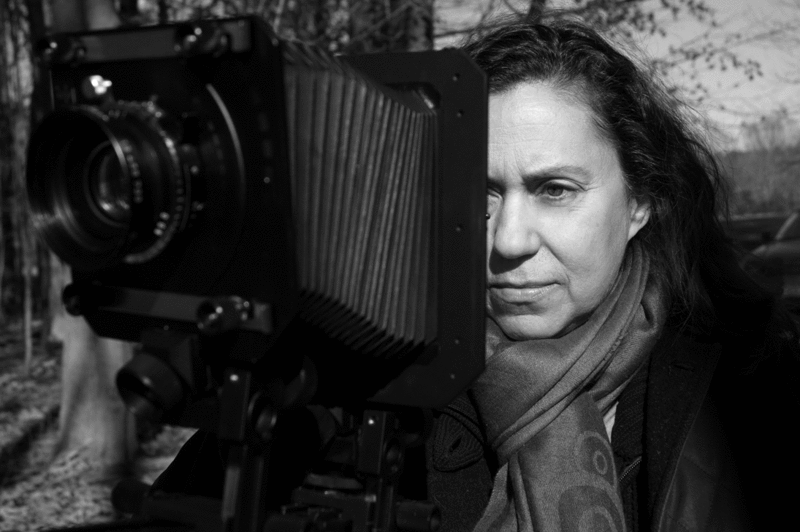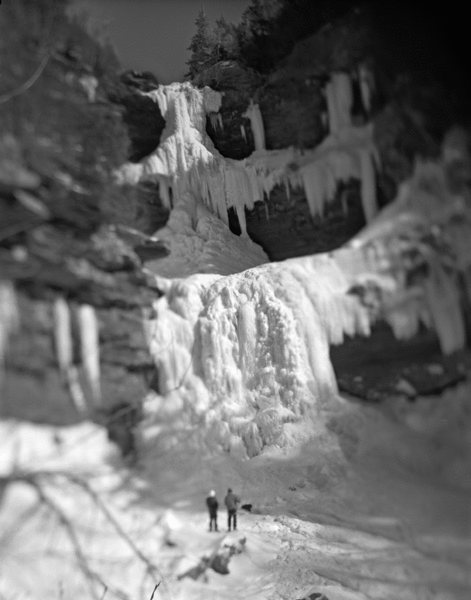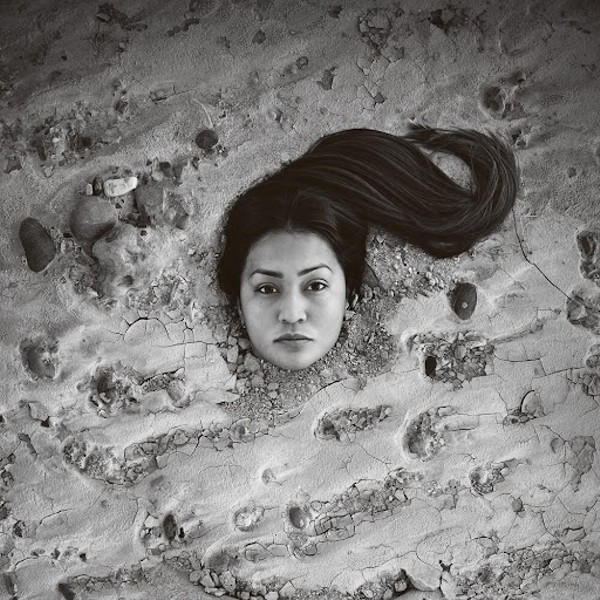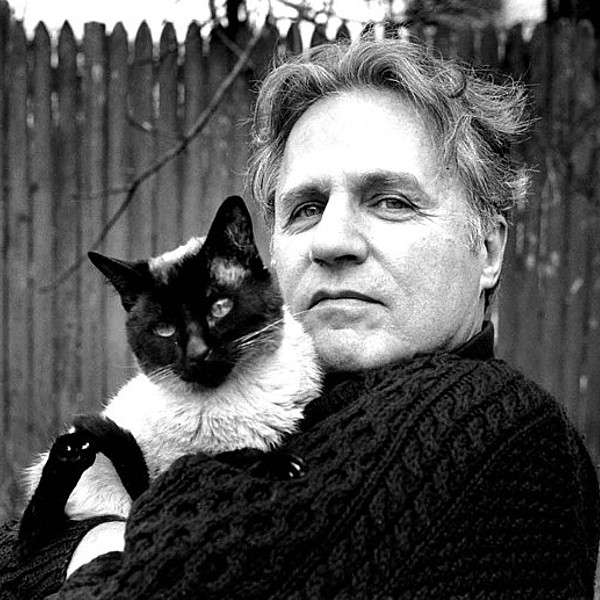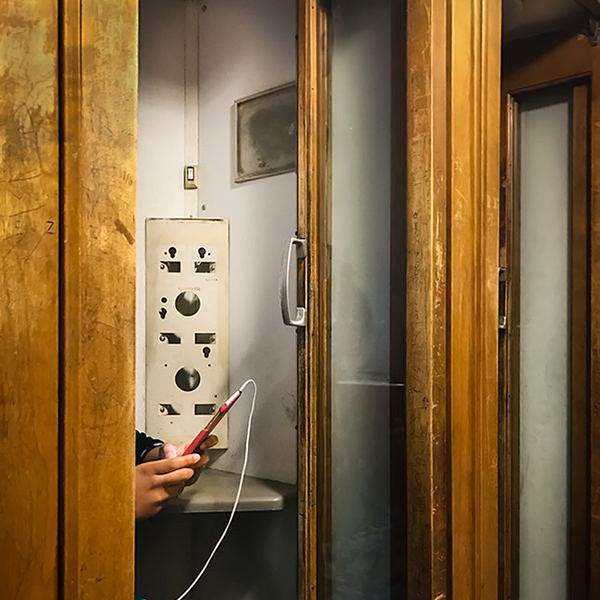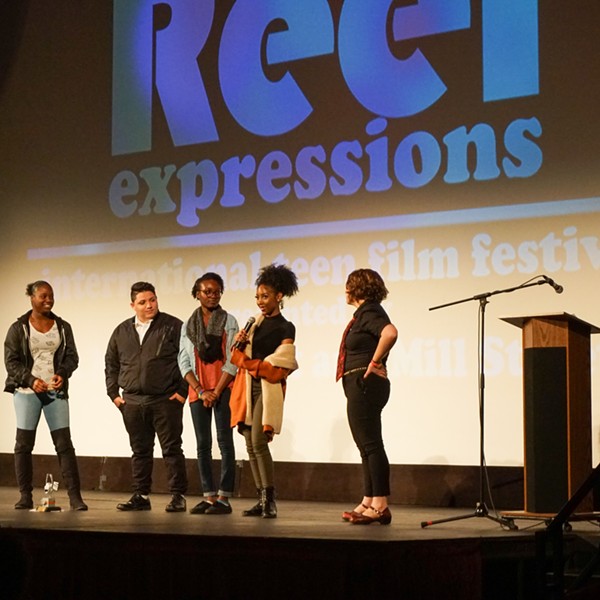With a great-grandmother (and three great-aunts) who were enmeshed in Manhattan’s progressive artistic scene of the early 20th century, Susan Wides was almost bound to become an artist. Yet she was raised in conservative Cincinnati, the town that arrested its museum director for exhibiting controversial photographs by Robert Mapplethorpe back in the 1980s. Such a background, it seems, has set the pattern for her work in photography, which regularly oscillates in the attempt to reconcile opposites—past and present, duplicity and authenticity, reality and myth. This dynamic even extends to her personal life, as she divides her time between an apartment in New York City and a house in rural Catskill.
Through December 15, Wides is showing her latest series of photographs, “Mannahatta,” at the Kim Foster Gallery in Chelsea. Focusing on views of the city, often from rooftops, these images have been described in
New York magazine, where a number of them first appeared, as “fluid rather than static; her lens swings, tilts and pans, giving the images a dynamism that they share with the city they capture, itself an ongoing act of imagination.”
Portfolio: www.kimfostergallery.com
Susan Wides on Her Work
Getting started
After I graduated, I moved to New York and got a job at the Metropolitan Museum of Art, printing photographs, the only thing that I could possibly do to make a living. I printed in the darkroom with five really crazy New Yorkers, black-and-white prints of all the art in the collection. That’s where I met Jim [her husband], another young artist who’d just gotten his MFA from Columbia, and was working in the graphic design department there. There were a lot of artists working at the Met back then [in the early 1980s].
Through the Met, I got an invitation for a job to do photography at a design studio, so that’s how I was making a living. I had no idea what I was doing. They taught me how to turn on the strobes. It ended up being really useful for my work, because I learned how to work a 4x5 camera there, which I use all the time now. I had an art background, not that specific sort of experience out of art school. I learned how to do lighting there, I got comfortable with the 4x5. I still didn’t think I would ever shoot with a 4x5 because it was so awkward, but it ended up…you do what you have to do. I didn’t want to, but eventually I had to.
A world of wax
In the 1980s I worked on a long-term wax museum project, which started at Coney Island when I walked into this wax museum and had a revelation. The place was just there for another six months after I discovered it. It had been there since the ’20s. It was 1983, and we were in the middle of the Reagan times, with “Feminazis,” and ketchup was a vegetable, and all that. This wax museum had all these displays of women being murdered, which was really interesting to me. Like Ruth Snyder, this woman who was electrocuted. There had been a famous surreptitious photograph made of her in the electric chair, which was why it was in the museum. It made an interesting mix between photography and trying to create the aura of it again [in wax], and now doing it photographically again.
Once I got my first photos back, the play between the frozen moment and trying to create the aura that was lost in the original photograph, then all the ideas about mortality, came out—they’re like us but they’re not, they’re dead, and it just goes on and on. It reminded me of a doll I had when I was a kid that was my size; there’s a lot of stuff there for me. And then there were all the cultural messages, all these women being killed. I was fascinated for years with this subject. I photographed wax museums all over after that. It turned into a really big series.
In the name of the rose
The next series was the roses, which are vignetted around the edges. In the botanical gardens, the plaques next to the roses have these names—I was very intrigued by the names of the roses, deconstructing culture in that way, the relationship between nature and culture and cultivation. A lot of the same stereotypes [about women] that I was working with in the wax museums were there also. So many of the flowers were named for women, ideals of culture, of femininity.
The roses were very short-focus, and I was using this card with a hole cut out in the middle, with fringing on the edges, to vignette the view in front of the lens. But even with the short focus, some sort of strange optical thing happens at the edges of the frame, it comes very in-focus. So I was able to work with out-of-focus things and in-focus things, and to play with them just through my framing. At the time, I was shooting 35mm, but that’s what led me to using the 4x5 in the way that I do.
Or is it Memorex?
The thing that’s intriguing to me—the wax museum had an oscillation between what’s fake and what’s real, and when you photograph it, it becomes more [real]. I found that when I was shooting in this way [with the 4x5], I still had the same thing going on. The focal shift comes from manipulating the lens board and the film back, so they’re not in line anymore. It becomes this plane of focus cutting through the picture. I’m not interested in making the real world look fake, though. What interests me isn’t the effect that “the whole world is a model.” I like that you can look at it, and you have to ask yourself, “Is that real, or not?” Just like in the wax museum pictures, you look at the image and ask, “Is that a real woman lying there, sleeping?” The oscillation between those things is what’s really interesting. It forces the viewer into this place where they have to be more active, and interpret, and really get involved with the work. [I like] leaving something for them to think about, something to figure out.
Social landscapes
What started me on “Kaaterskill” is my moving up here [in 2002]. Across the street from this place, you see a thick cut in the mountain, which is the Otis elevator cut, the elevated railway that took people up to the [Catskill]mountain house. I said to myself, “What the hell is that?” Realizing that we’re four minutes away from the Kaaterskill Clove, and the beginning of the Hudson River School and Thomas Cole and all that stuff, it just all evolved from that. That whole idea about what they were trying to create—while they were painting this virginal wilderness theme, that supposedly existed here; just two minutes away from that spot in the Kaaterskill Clove, all this raping of the land took place. The focus in my pictures, sliding in and out, allows them to slide into that mythic dimension [that the painters created]. It’s really important that they’re photographs, also—a particular time, a particular moment, the light is a certain way. I like that transmission. We live in this global society, but we still walk outside and breathe in the air to a particular place. What is that place about, what is that light about, what’s the history of that place?
[Manhattan and the Hudson Valley] are both specific places where I spend a lot of time, and they’re also places with tremendous history to them too. It’s my conversation with the history of art, and the history of photography as well. The Paul Strand movie Manhatta was my point of entry into the Whitman poem, and into this series [“Mannahatta”] as well. I’m very inspired by early experimental film. It’s a very heroic, modernist document, and the Whitman is so…optimistic. It has a quality that’s life-affirming as well. I’m almost afraid to say it, because it’s so clichéd, but it’s a post-9/11 moment in the new photographs. But I don’t really want to say that, because I’m so sick of it! The world changed, of course, and taking photographs from rooftops of the New York skyline really makes it begging to be said, but I’d rather have it said by somebody else, not by me.







